Pacific Union Quarterly Report: Q3 2017
For the most part, home prices rose and inventory declined in the third quarter from one year earlier throughout the Bay Area and in the Lake Tahoe/Truckee region. Only our Sonoma County and Sonoma Valley regions saw supply conditions improve from the third quarter of 2016. San Francisco and the Mid-Peninsula experienced the region’s biggest annual inventory declines, with the number of homes for sale down by double-digit percentage points.
Below, Pacific Union Chief Economist Selma Hepp offers a brief synopsis of third-quarter real estate activity in each of Pacific Union’s regions. The accompanying links lead to the full report for each area, where you can access the latest regional and community-specific market data and statistics to help you make a better, more informed homebuying or selling decision.
Contra Costa County
 Third-quarter housing market activity in Contra Costa County continued the strong pace that began earlier in the summer. Despite fewer homes on the market than during the same period last year, the number of transactions remained steady. As a result, buyers again faced more competition, and the median home price increased from the third quarter of last year. Nevertheless, strong median price growth also reflects a healthy rebound in luxury sales this summer. Still, competition for available homes remains among all price ranges, and an increasing number of homes sold for more than the asking price.
Third-quarter housing market activity in Contra Costa County continued the strong pace that began earlier in the summer. Despite fewer homes on the market than during the same period last year, the number of transactions remained steady. As a result, buyers again faced more competition, and the median home price increased from the third quarter of last year. Nevertheless, strong median price growth also reflects a healthy rebound in luxury sales this summer. Still, competition for available homes remains among all price ranges, and an increasing number of homes sold for more than the asking price.
Homes continue to sell rather quickly, with competitively priced properties finding a buyer in less than two weeks. The rapidly declining inventory of affordable homes remains a concern, since Contra Costa County’s relative affordability was a big draw for first-time buyers, especially in Pleasant Hill and Concord. Walnut Creek buyers are enthusiastic about the revitalized downtown center and competed for several new condominium complexes with not-so-affordable starting prices — one-bedroom units listing for about $1 million.
Looking Forward: Renewed enthusiasm among buyers suggests that the fourth quarter will continue to see strong activity and heightened competition among buyers. Declining inventory may be the biggest challenge for buyers entering the market.
Click here to read the full Q3 2017 Contra Costa County real estate report.
East Bay
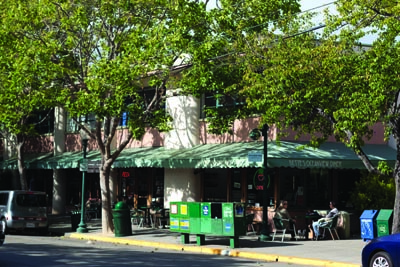 The East Bay‘s housing market continued its strong streak in the third quarter, with the largest sales increase from last year among Bay Area regions. Higher-priced homes experienced renewed demand, which was fueled by an increase in inventory. On the other hand, a lack of relatively affordable homes is holding back sales at lower price points.
The East Bay‘s housing market continued its strong streak in the third quarter, with the largest sales increase from last year among Bay Area regions. Higher-priced homes experienced renewed demand, which was fueled by an increase in inventory. On the other hand, a lack of relatively affordable homes is holding back sales at lower price points.
Despite the continual decline of homes for sale, lower-priced properties were in high demand, and buyer competition intensified. An increasing share of homes sold for premiums, especially for more affordable properties, for which buyers typically paid about 14 percent more than the asking price. The pace of sales in the East Bay was brisk, with most homes selling in less than two weeks.
Tight inventory combined with strong buyer demand ensured that the median price increased by double-digit percentage points — especially in the region’s most popular neighborhoods.
Looking Forward: Strong summer activity suggests that there will be no shortage of buyers the rest of the year. Low inventory will remain a challenge, particularly for budget-constrained buyers, putting further upward pressure on prices. Homes in close proximity to restaurants and BART stations still appeal most to East Bay buyers.
Click here to read the full Q3 2017 East Bay real estate report.
Marin County
 Marin County homebuyers remained enthusiastic in the third quarter, continuing the streak of healthy home sales activity that began earlier in the year. Marin County saw the second-strongest increase in home sales in the Bay Area this year, driven by strong demand for homes priced between $2 million and $3 million.
Marin County homebuyers remained enthusiastic in the third quarter, continuing the streak of healthy home sales activity that began earlier in the year. Marin County saw the second-strongest increase in home sales in the Bay Area this year, driven by strong demand for homes priced between $2 million and $3 million.
At the same time, third-quarter inventory was lower than during the same period a last year, leading to heightened competition among buyers. Bidding wars remained common, and almost half of homes sold over the asking price, a notable increase from the same period last year.
Strong sales amid a declining number of homes for sale led the months’ supply of inventory to fall to almost half of what it was during the third quarter of 2016. Fewer homes for sale combined with robust demand kept pressure on prices, which continued to grow at a solid pace, especially for more affordable properties. Homes sold a few days faster than they did at the same time last year.
Looking Forward: Heightened enthusiasm among buyers suggests that activity in the fourth quarter will remain strong. Fall is already showing strong activity, boosted by new listings coming to market, which buyers have been eagerly anticipating.
Click here to read the full Q3 2017 Marin County real estate report.
Mid-Peninsula
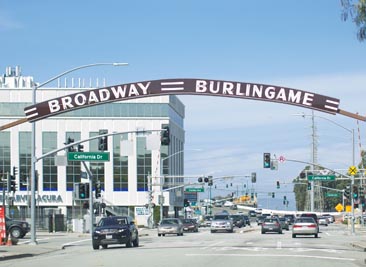 Following a strong spring homebuying season, the third quarter in our Mid-Peninsula region showed the usual summer lull, with activity comparable to the same period last year. The strongest demand was for homes priced between $2 million and $3 million, for which sales increased notably but inventory diminished rapidly. Generally, the trend of falling inventory levels over the last year has kept sales activity muted.
Following a strong spring homebuying season, the third quarter in our Mid-Peninsula region showed the usual summer lull, with activity comparable to the same period last year. The strongest demand was for homes priced between $2 million and $3 million, for which sales increased notably but inventory diminished rapidly. Generally, the trend of falling inventory levels over the last year has kept sales activity muted.
At the same time, continued competition among buyers caused homes to go into contract in less than two weeks. An increased number of properties sold for more than asking price, and sellers enjoyed higher premiums than they did in the third quarter of last year. As the result of these market forces, the median sales price grew by double-digit percentage points. The largest price increases were recorded in relatively more affordable communities such as Redwood City, San Carlos, and Belmont, which have become the Mid-Peninsula’s new hot spots, as these cities revitalize their downtown areas in response to their growing popularity.
Looking Forward: A strong end to the third quarter suggests that buyers remain very active and eager. Fewer homes for sale will keep buyer competition stiff, leading to further price appreciation.
Click here to read the full Q3 2017 Mid-Peninsula real estate report.
Napa County
 Following an outstanding second quarter, Napa County‘s housing market activity slowed some in the third quarter, especially in September. Buyers were hampered by a lack of homes for sales, with inventory down about 7 percent from the same period last year. Buyer demand outstripped supply, particularly for more affordable homes.
Following an outstanding second quarter, Napa County‘s housing market activity slowed some in the third quarter, especially in September. Buyers were hampered by a lack of homes for sales, with inventory down about 7 percent from the same period last year. Buyer demand outstripped supply, particularly for more affordable homes.
Despite the slower summer months, the median price continued to inch higher. Again, affordable homes remain in strong demand, and prices for these properties rose at a relatively stronger pace. Among Bay Area communities, Napa’s median price for affordable homes has gained the most momentum so far this year.
Looking Forward: While early fall market dynamics suggested a strong pickup in activity in the fourth quarter, the recent Wine Country fires will undoubtedly have a powerful impact on the area’s housing markets in months to come. In the short term, housing will be needed for those unfortunate families who lost their homes, and all available properties will be in demand, whether they are seasonally occupied second homes, rentals, or available accessory units. The full impact of the disaster is still hard to estimate, however, in light of already constrained inventory, further pressures on the market are a near certainty.
Click here to read the full Q3 2017 Napa County real estate report.
San Francisco
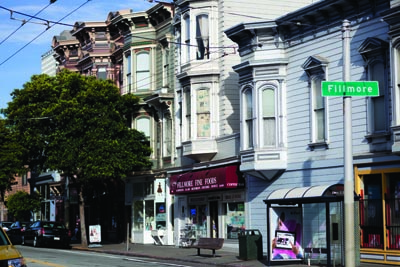 Stronger 2017 housing market activity in San Francisco continued into the third quarter. Still, buyers remained constrained by very limited inventory. The quarter ended with fewer overall sales than during the same period last year, and inventory for both single-family homes and condominiums fell by double-digit percentage points.
Stronger 2017 housing market activity in San Francisco continued into the third quarter. Still, buyers remained constrained by very limited inventory. The quarter ended with fewer overall sales than during the same period last year, and inventory for both single-family homes and condominiums fell by double-digit percentage points.
At the same time, strengthened activity and competition among buyers caused properties to sell faster than they did in the third quarter of 2016 across all price ranges except for $3 million-plus. Bidding wars were common, and seven in 10 homes sold above the asking price, with premiums for single-family homes reaching 16 percent. Buyers of homes priced between $1 million and $2 million are facing more intense competition, and most paid 20 percent more than the asking price.
As a result, the median sales price showed moderate growth. Nevertheless, prices of newly constructed condominiums continued to trend lower, while prices of existing units maintained their solid upward momentum.
Looking Forward: The Bay Area’s strong economic drivers should continue to fuel demand for San Francisco real estate. Despite newly constructed condominiums, inventory levels remain severely undersupplied, which will hold back future home sales activity.
Click here to read the full Q3 2017 San Francisco single-family homes real estate report.
Click here to read the full Q3 2017 San Francisco condominiums real estate report.
Silicon Valley
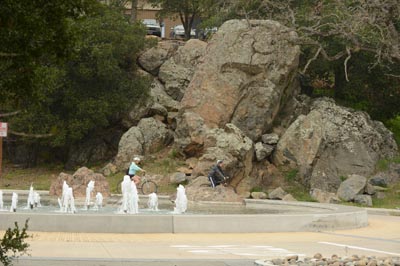 Following a strong end to the spring homebuying season in Silicon Valley, the summer months brought continued momentum to the housing market, with sales exceeding last year’s third quarter. However, while sales of higher-priced homes flourished, lower price points were constrained by rapidly declining inventory, which was almost half of levels recorded during the same period last year.
Following a strong end to the spring homebuying season in Silicon Valley, the summer months brought continued momentum to the housing market, with sales exceeding last year’s third quarter. However, while sales of higher-priced homes flourished, lower price points were constrained by rapidly declining inventory, which was almost half of levels recorded during the same period last year.
Amid such supply conditions, buyers faced stiff competition, and a significant number of homes sold for premiums. The share of homes that sold for more than list price has increased over the last year, with a 17 percent gain from the third quarter of 2016.
Relatively more affordable Sunnyvale has become the area’s newest hot spot, and the median sales price has increased by about 50 percent from three years ago. In response to its new popularity, Sunnyvale has revitalized its downtown area.
Looking Forward: Buyer enthusiasm suggests continued demand and strong activity in the fourth quarter. However, major sales increases will be hampered by a lack of inventory. Buyer competition may further intensify, especially at the lower end of the market, while the higher end could see slowing activity.
Click here to read the full Q3 2017 Silicon Valley real estate report.
Sonoma County
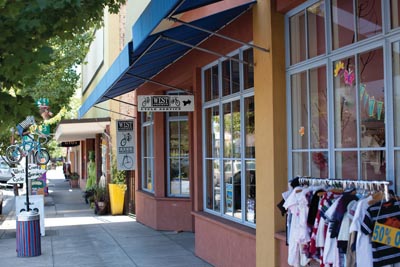 Third-quarter housing market activity in Sonoma County continued to see buyers searching for affordable homes, which are in high demand. Buyers in the lower-priced segment saw increasingly more offers being made on attractive properties, and a larger share of homes sold over the asking price than during the same period last year.
Third-quarter housing market activity in Sonoma County continued to see buyers searching for affordable homes, which are in high demand. Buyers in the lower-priced segment saw increasingly more offers being made on attractive properties, and a larger share of homes sold over the asking price than during the same period last year.
More inventory of higher-priced homes boosted that segment of the market, while inventory shortages of lower-priced homes were intensified by sellers’ concerns of being unable to find a move-up home if their current property sold. Because of heighted buyer competition, median prices increased notably throughout 2017 but remained steady from the second quarter.
Looking Forward: While early fall market dynamics suggested a strong pickup in activity in the fourth quarter, the recent Wine Country fires will undoubtedly have a powerful impact on the area’s housing markets in months to come. In the short term, housing will be needed for those unfortunate families who lost their homes, and all available properties will be in demand, whether they are seasonally occupied second homes, rentals, or available accessory units. The full impact of the disaster is still hard to estimate, however, in light of already constrained inventory, further pressures on the market are a near certainty.
Click here to read the full Q3 2017 Sonoma County real estate report.
Sonoma Valley
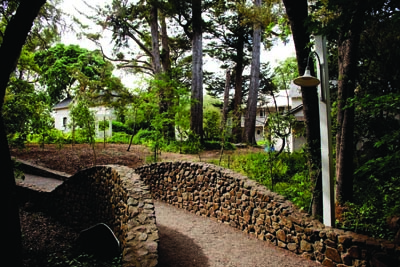 Third-quarter sales activity in Sonoma Valley ended on par with last year, when the quarter started busy and slowed in September. However, unlike many other Bay Area communities, Sonoma Valley buyers are not grappling with continually declining inventory conditions. On the contrary, inventory in Sonoma Valley has improved over the last two quarters, especially for homes priced between $1 million and $2 million. However, the number of affordable homes for sale has declined, and buyers in that price range faced stiffer competition and saw more homes selling for premiums. Also, affordable homes are selling at a brisker pace — almost three weeks faster than during the same period last year.
Third-quarter sales activity in Sonoma Valley ended on par with last year, when the quarter started busy and slowed in September. However, unlike many other Bay Area communities, Sonoma Valley buyers are not grappling with continually declining inventory conditions. On the contrary, inventory in Sonoma Valley has improved over the last two quarters, especially for homes priced between $1 million and $2 million. However, the number of affordable homes for sale has declined, and buyers in that price range faced stiffer competition and saw more homes selling for premiums. Also, affordable homes are selling at a brisker pace — almost three weeks faster than during the same period last year.
The inventory of higher-priced homes increased at a solid pace, though those are generally second homes or vacation homes and generally out of first-time buyers’ budgets. Despite competitive market conditions, the year-over-year median price increase was moderate in the third quarter.
Looking Forward: While early fall market dynamics suggested a strong pickup in activity in the fourth quarter, the recent Wine Country fires will undoubtedly have a powerful impact on the area’s housing markets in months to come. In the short term, housing will be needed for those unfortunate families who lost their homes, and all available properties will be in demand, whether they are seasonally occupied second homes, rentals, or available accessory units. The full impact of the disaster is still hard to estimate, however, in light of already constrained inventory, further pressures on the market are a near certainty.
Click here to read the full Q3 2017 Sonoma Valley real estate report.
Lake Tahoe/Truckee
 Following strong second-quarter housing market activity in the Lake Tahoe/Truckee region, the third quarter saw similar buyer enthusiasm. Home sales reached the highest levels in two years, with August and September showing particularly robust activity. Intense buyer demand outpaced the supply of new homes on the market, with inventory levels dropping for both single-family homes and condominiums on an annual basis.
Following strong second-quarter housing market activity in the Lake Tahoe/Truckee region, the third quarter saw similar buyer enthusiasm. Home sales reached the highest levels in two years, with August and September showing particularly robust activity. Intense buyer demand outpaced the supply of new homes on the market, with inventory levels dropping for both single-family homes and condominiums on an annual basis.
Buyers continued to feel a greater sense of urgency, and homes sold more rapidly than in the past couple of years. Sellers were also more realistic than in previous years, which led to fewer price reductions. But more realistic pricing of homes caused increased competition among buyers, and more homes sold over the asking price.
Median prices also showed some strengthening as a result of heightened buyer demand and increased almost 10 percent year to date.
Looking Forward: A strong finish to the third quarter and increased levels of homes under contract suggest that the fourth quarter will see the solid pace of sales continue.
Click here to read the full Q3 2017 Lake Tahoe/Truckee single-family homes real estate report.
Click here to read the full Q3 2017 Lake Tahoe/Truckee condominiums real estate report.
 TEAM WAKELIN
TEAM WAKELIN